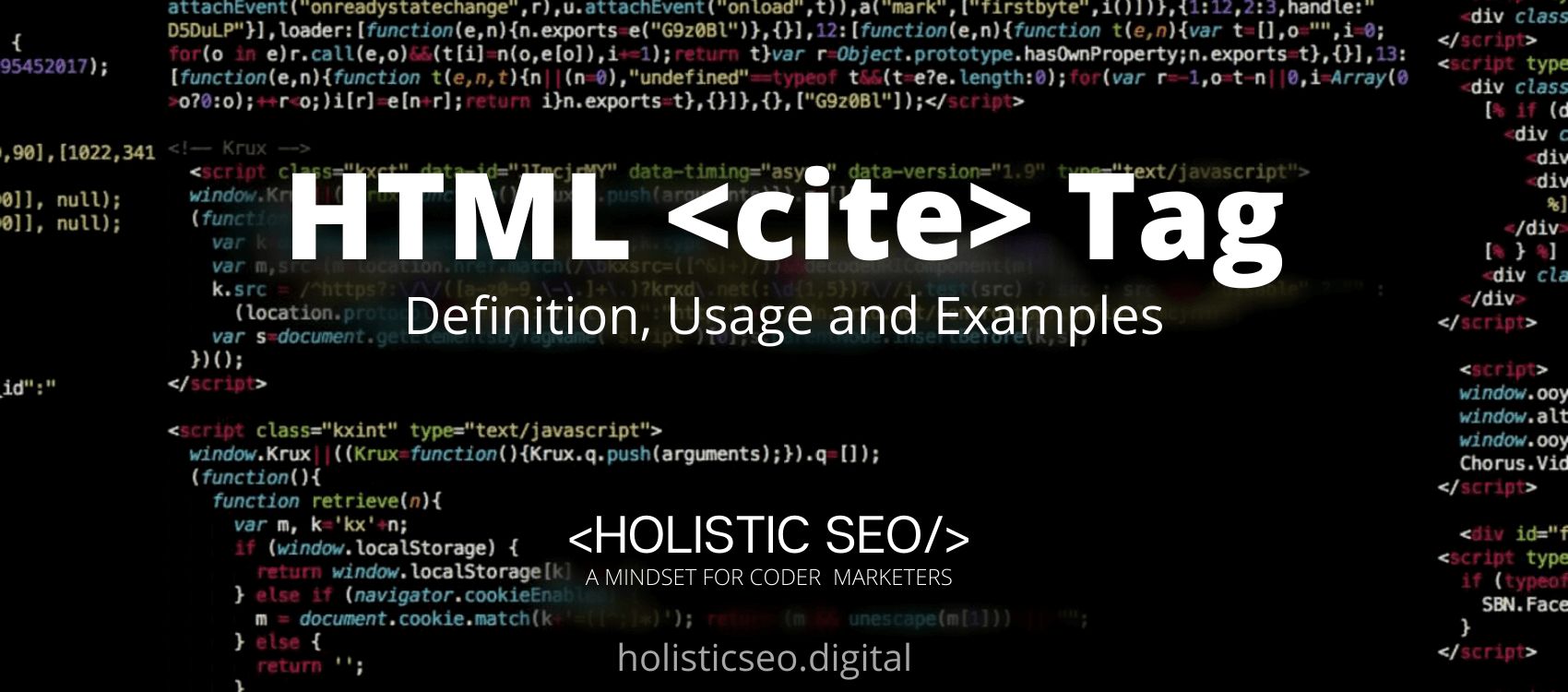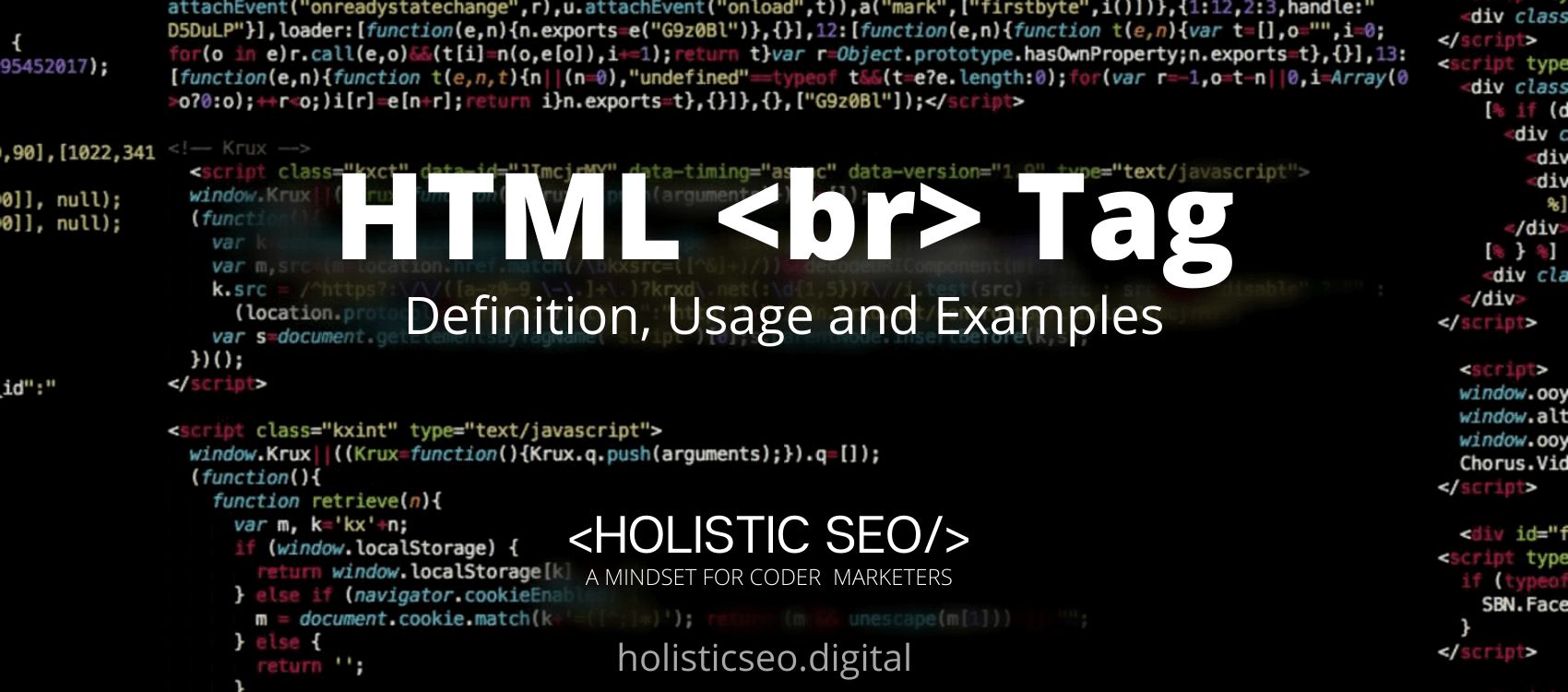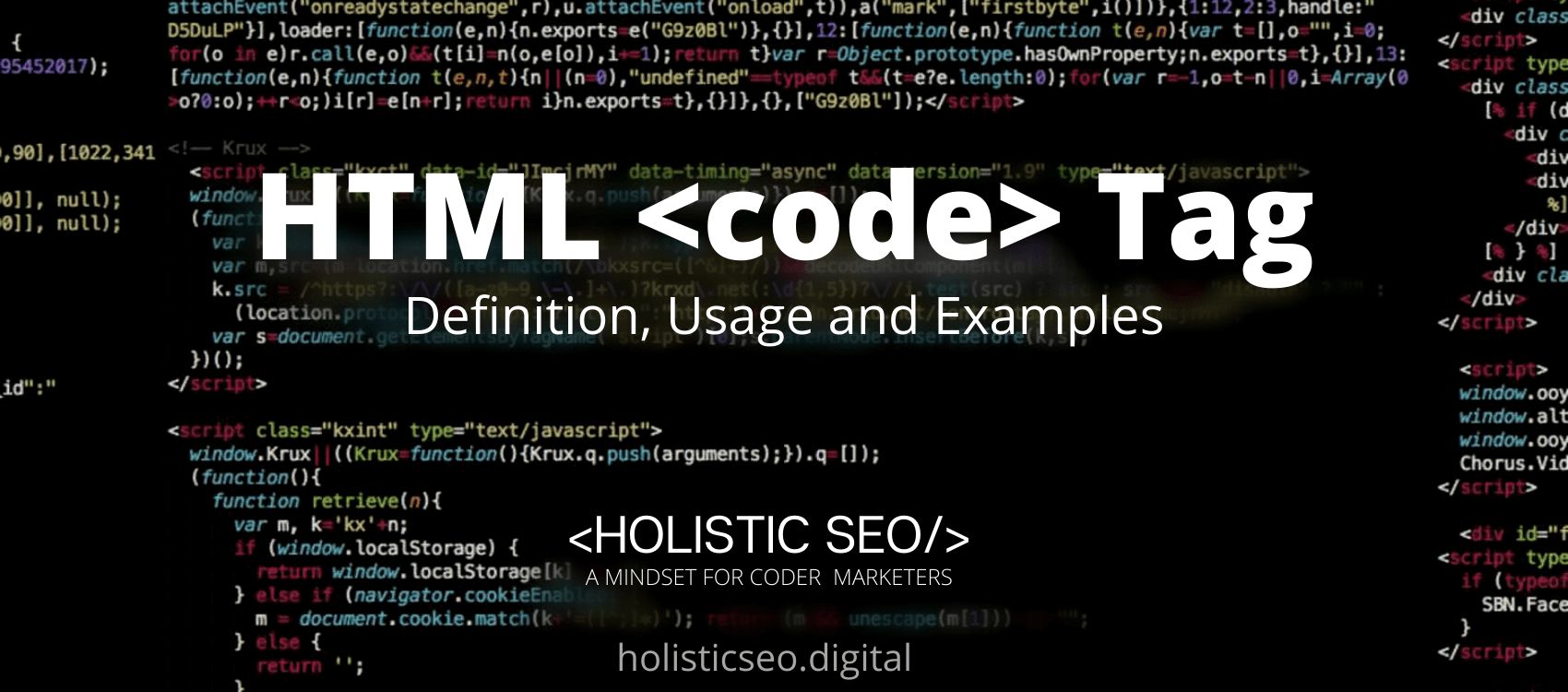The HTML <cite> tag defines the title of creative work. The HTML Tag <cite> is used to describe a reference to a cited creative work and must include the title of that work. The reference may be in an abbreviated form according to context-appropriate conventions related to citation metadata. The usual purpose of the <cite> element is to provide or identify the source of a quote or other piece of material. The <cite> HTML Tag is part of Formatting HTML category in HTML Element Reference. The attributes of the <cite> HTML Tag are global attributes and event attributes.
<cite> code block example to learn how it works is given below.
<cite>Citation here...</cite>The second example usage of the “<cite>” code block example is below.
<blockquote>
The smaller your reality, the more convinced you are that you know everything.
</blockquote>
<cite>My Big <abbr title="Theory Of Everything">TOE</abbr></cite>What is <cite> HTML Tag?
To use the <cite> HTML Tag the web developer should have included content wrapped in <cite> tags that represents the title of work such as a book, a paper, an essay, a poem, a score, a song, a script, a film, a television show, a game, a sculpture, a painting, a theatre production, a play, an opera, a musical, or an exhibition.
How to Use <cite> HTML Tag?
To use the <cite> HTML Tag the web developer must describe a citation to a cited creative work and give the work’s title. The reference may be abbreviated in accordance with context-appropriate citation metadata formats.
Example Usage of <cite> HTML Tag?
The following example of usage of <cite> HTML tag is given below.
<p><cite>Mona Lisa</cite> by Leonardo da Vinci. Painted in 1503.</p>What are the Attributes of <cite> HTML Tag?
There are multiple attributes for the <cite> HTML Tag. The following attributes are listed below.
- Global Attributes: The <cite> HTML Tag supports global attributes. All HTML elements, even those not specified in the standard, can have global attributes. This means that any non-standard elements must nevertheless allow certain characteristics, even if using such elements makes the content non-HTML5 compliant.
- Event Attributes: The <cite> HTML Tag supports event attributes. The Event Attributes always have a name that begins with “on” and is followed by the name of the event for which it is intended. They specify a script to run when an event of the defined type is dispatched to the element with the specified attributes.
What is the Default CSS Setting for <cite> HTML Tag?
The following is the Default CSS Setting for the <cite> HTML Tag.
cite {
font-style: italic;
}What are the Related other HTML Tags to <cite>?
The other related HTML Tags to the <cite> HTML Tag are listed below.
- <blockquote> HTML Tag: The <blockquote> HTML Tag is related to <cite> HTML Tag because they are both in formatting HTML Tags. The <blockquote> HTML Tag is used to include quotations from other sources.
- <b> HTML Tag: The <b> HTML Tag is related to <cite> HTML Tag because they are both in formatting HTML Tags. The <b> HTML Tag is used to indicate that the text is bold.
- <address> HTML Tag: The <address> HTML Tag is related to <cite> HTML Tag because they are both in formatting HTML Tags. The <address> HTML Tag is used to specify the author of a website or document’s contact information.
- <bdi> HTML Tag: The <bdi> HTML Tag is related to <cite> HTML Tag because they are both in formatting HTML Tags. The <bdi> HTML Tag is used to create text that is written in a different direction than the rest of the text.
- 48 Online Shopping and Consumer Behavior Statistics, Facts and Trends - August 22, 2023
- B2B Marketing Statistics - August 22, 2023
- 38 Podcast Statistics, Facts, and Trends - August 22, 2023


